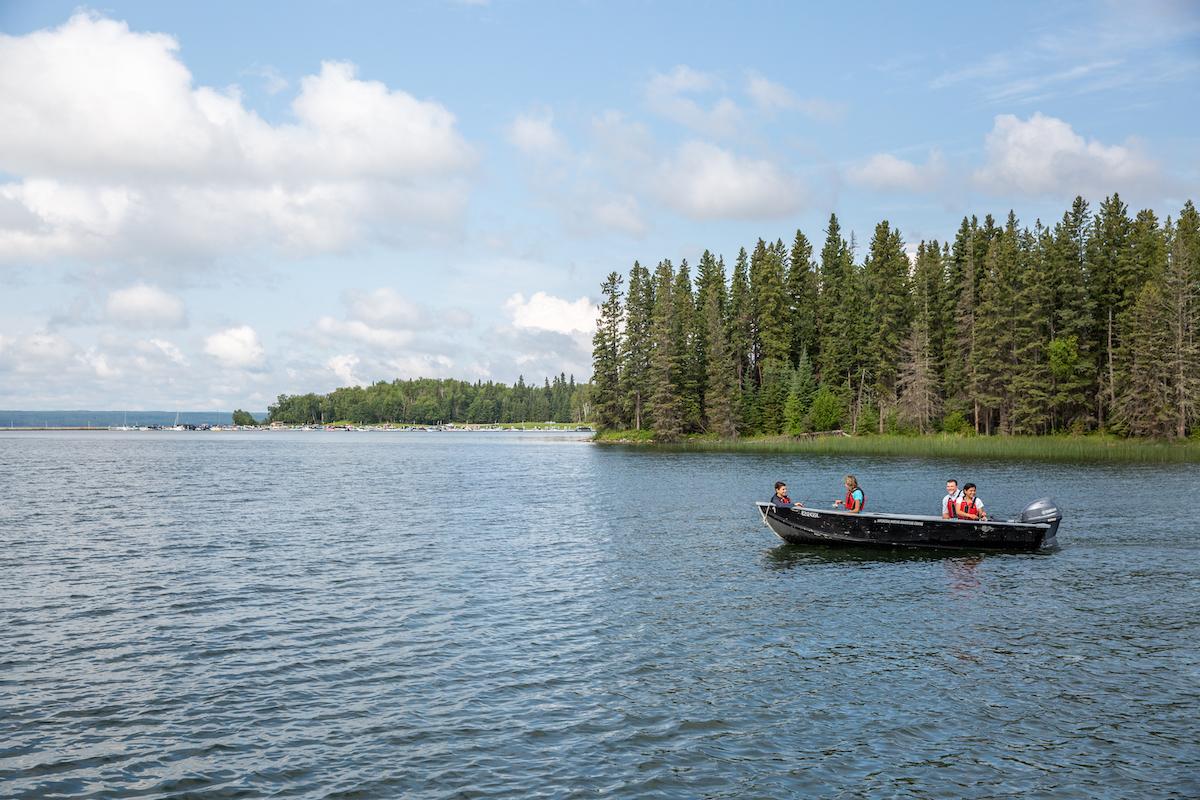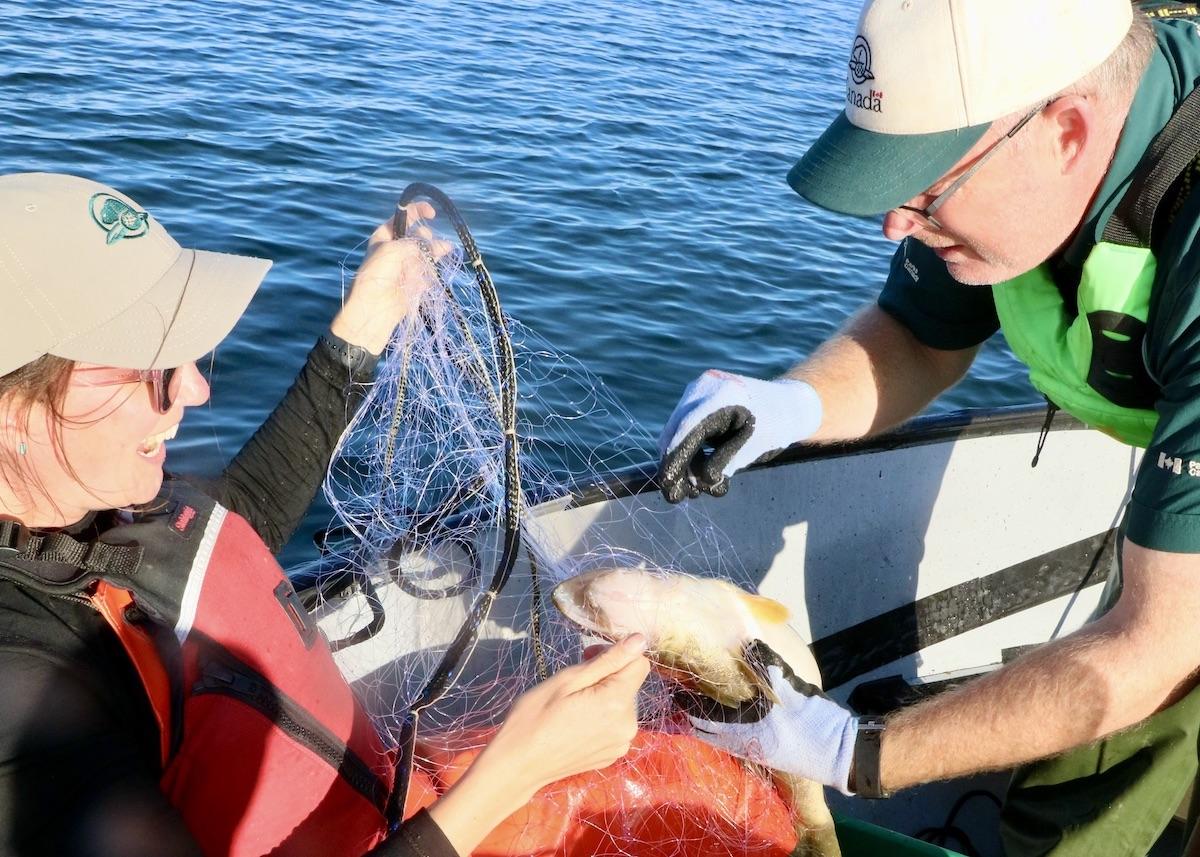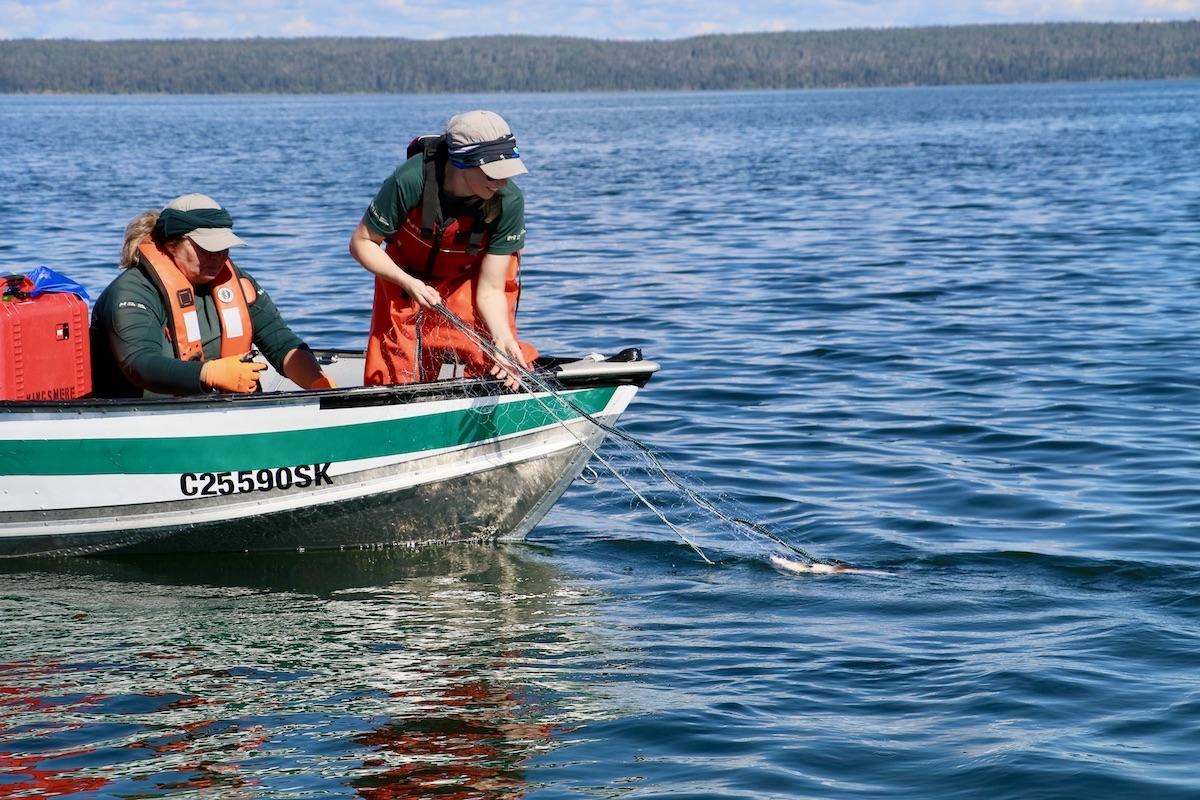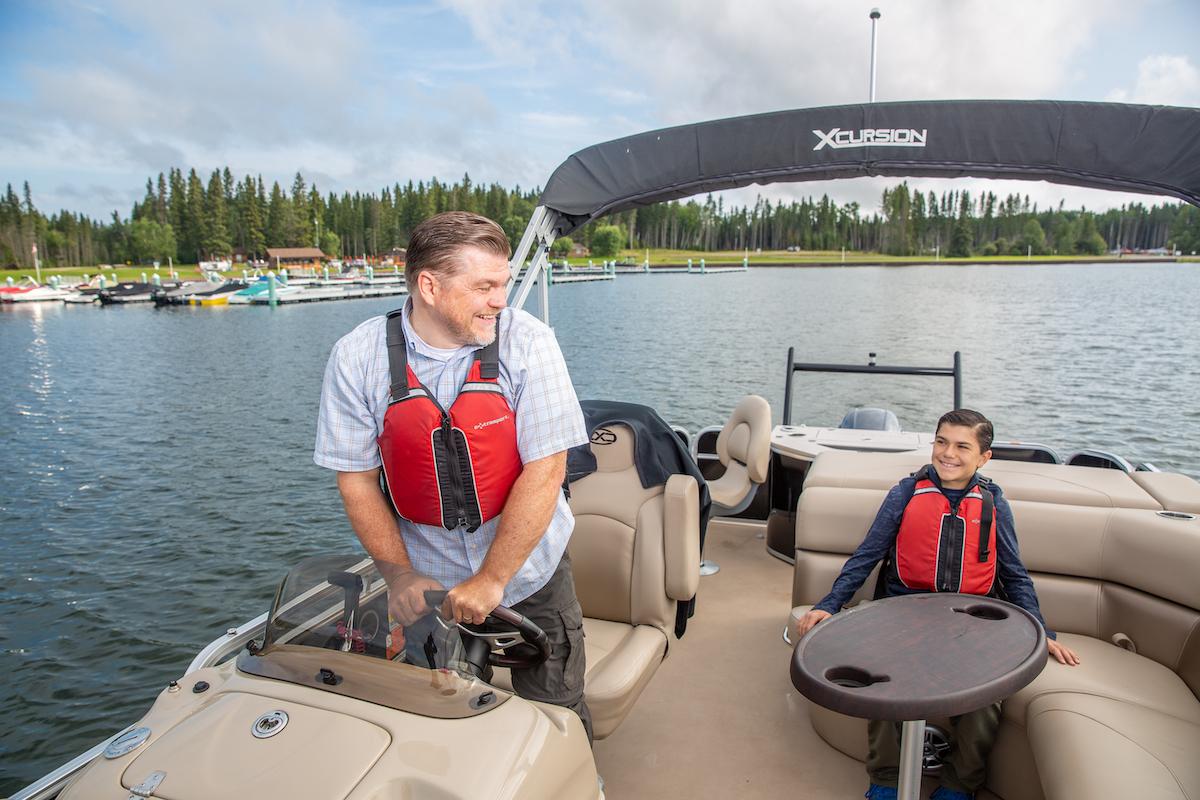
Boating on a pristine lake in Prince Albert National Park/Parks Canada
Lake trout numbers are dropping in one of Prince Albert National Park’s popular fishing lakes and Parks Canada wants the public’s help in figuring out why.
Standardized monitoring tests done in 2009, 2015 and 2017 show that the trout population in KIngsmere Lake has dropped by about 45 per cent. Another round of Summer Profundal Index Netting (SPIN) will be done in late August or early September with the goal of producing a lake trout management plan by the fall that can be implemented next spring.
“We consider lake trout to be an indicator species,” says Parks Canada ecologist Brad Lloyd. “They’re a top-level predator with a whole food chain below them. If you start to see changes in their population, you want to see what is going on. As an indicator species, it helps give us a bigger picture of how that ecosystem is functioning.”
Staff in the Saskatchewan park have taken a “good hard look at the possibilities” for the decline, which include angling pressure, changes to water quality due to climate change, problems with spawning habitat and competition with other species.
“Surprisingly enough, we don’t think climate change is the issue at this point,” says Lloyd. Tests on nearby Wassegam Lake — an even more remote lake with limited angling pressure — showed the trout there are doing fine and so there aren’t likely any broader regional causes.

Lake trout research has been done on various lakes in Prince Albert National Park for the last 13 years/Parks Canada
Dubbed “Saskatchewan’s playground,” Prince Albert National Park was established in 1927 and protects 3,875 square kilometres (2,400 square miles) of Southern Boreal Plains and Plateaux natural region. It’s home to the free-ranging Sturgeon River herd of plains bison, white pelican, grasslands, boreal forests, rolling aspen parkland and pure lakes. Indigenous history dates back more than 8,000 years and 13 First Nation or Métis communities have ties with the park.
A cabin that belonged to turn-of-the-century conservationist and author Grey Owl is here. The English author and conservationist Archibald Belaney (who called himself Grey Owl and passed himself off as Indigenous) and his Mohawk wife Gertrude Bernard lived and worked here and in Riding Mountain National Park in the 1930s.
The resort town of Waskesiu, on Waskesiu Lake, is the main hub and an access point to lakes, beaches, swimming, boating (motorized and non-motorized), backcountry and camping. The townsite has 570 private cabins/cottages plus commercial accommodations, shops, dining and groceries. The permanent population is below 100, but come summer the town draws thousands of visitors a day. In 2021, the park logged 319,644 visitors.
“The majority of people are coming here because of the lakes,” says Lloyd. “They’re extensively used for recreation in the summer with boating, waterskiing, a fair bit of fishing and some camping.”
The park is at the southern edge of the boreal forest just before the landscape turns to farmland that goes all the way to the United States border.

A boy fishes from shore in Prince Albert National Park in 2019/Parks Canada
Getting to remote and isolated Kingsmere Lake — which has the cold, deep water that lake trout love — is a challenge. Boats are limited to 40 horsepower and must be taken up a river and over a rail portage system with a winch system to load and unload vessels.
“It’s a real adventure,” says Lloyd. “And it’s certainly a destination that people are coming to for that experience.”
The park is home to northern pike, walleye and other fish, but lake trout are the big draw. They're unique to North America, the largest species in the char family and sensitive to changes in their environment. Fishing season runs from the Saturday of Victoria Day weekend in May to Labour Day in September, but trout anglers typically gravitate to Kingsmere in May and June when the fish can be found in shallow water.
Anglers must buy a Parks Canada fishing permit for $10.25 ($8.20 USD) per day or $35.75 ($28.65 USD) per year, and stop for a free lake trout endorsement from the visitor center or south gate. They can catch one trout per day and — since 1999 — just two per year and must tag them. Live bait isn’t allowed and so beef heart is a popular substitute.
Kingsmere Lake is about 45 metres (148 feet) deep. After June, once the trout retreat to deeper water, the anglers are replaced by hikers, canoers, kayakers and backcountry campers.

Lake trout research is conducted at Crean Lake in the fall of 2021/Parks Canada
National parks must ensure that fish populations are conservatively managed on a sustainable basis and provide a healthy aquatic environment as well as high-quality fishing experiences.
For lake trout monitoring, park staff go to Kingsmere Lake and stay at patrol cabins for up to a week to do SPIN, a rapid assessment method developed in Ontario for lake trout with a low mortality rate. They set nets that are 64-meters (210-feet) long with eight panels featuring eight mesh sizes at random locations across four depths. The length and species of each fish caught in the net is recorded and the fish is released. If a fish dies during netting, its length, weight, sex, age and stomach contents are recorded. Otoliths — hard calcium carbonate bones that grow a new layer each year — are removed and sent to the Ontario Ministry of Natural Resources for aging.
Lloyd says Parks Canada has partnered in the past with the Montreal Lake Cree Nation, who have commercial fishing expertise, during the trout monitoring. The fish that die — which might include bycatch like whitefish — are filleted and donated to schools, elders and community fish fries.
The lake trout population in Kingsmere Lake is estimated to be in the thousands. Lloyd says the measurement they use is a “catch per unit effort” (CUE), meaning, for example that a CUE of one means one fish is caught every two hours. In 2009, the CUE for Kingsmere was 1.37 but by 2017 it dropped to 0.78.
“Any fisheries biologist wants to know how many fish do I have out there and how many are people taking,” says Lloyd. Based on studies, he believes the maximum number of trout that be sustainably taken from Kingsmere in a year is 500 to 600 (for a total of 1,307 kilograms/2,881 pounds). Another factor is that a 2019 angler survey showed a 5:1 ratio of catch-and-release to harvest, meaining that anglers kept 220 fish that year and released 1,125. A certain number of fish die through this method.
There is no slot size for trout, which spawn at night in the fall and like rocky cobble and two meters (6.5 feet) of water. And even though anglers must attach a tag to their trout, they’re not required to report details of each fish so there’s a lack of data. As well, there is “some poaching pressure that is impossible to catch.”
“There is a possibility that we’re exceeding our maximum sustainable yield,” says Lloyd. “We do need to take a harder look at the angling pressure.”

Since so much of Saskatchewan is farmland, Prince Albert National Park's lakes are a big draw/Parks Canada
Kingsmere Lake is on the southern edge of the range where lake trout are found. And it’s in an area that doesn’t have good connectivity, meaning “all these little populations have been isolated since deglaciation and there’s no opportunity for migration.”
Parks Canada hosted an online presentation April 7 to generate interest and feedback on the lake trout issue. “In all honesty, fishermen are spending way more time on the lake than we are,” says Lloyd. “We’ve been monitoring since 2009, but people have been fishing Kingsmere for generations. There’s a lot of useful information out there.”
The hope is to have a lake trout management plan in place for spring 2023, but if any policy or regulatory changes are needed — like when they instituted the maximum annual trout yield of two fish — it could take a couple of years.

 Support Essential Coverage of Essential Places
Support Essential Coverage of Essential Places




Comments
I would question the methods that were used to gain this opnion of the populaton in Kingsmere my conversations with provintial biolgists mention the flaws of these methods that were used, and how unreliable they are to come to any population estimations.